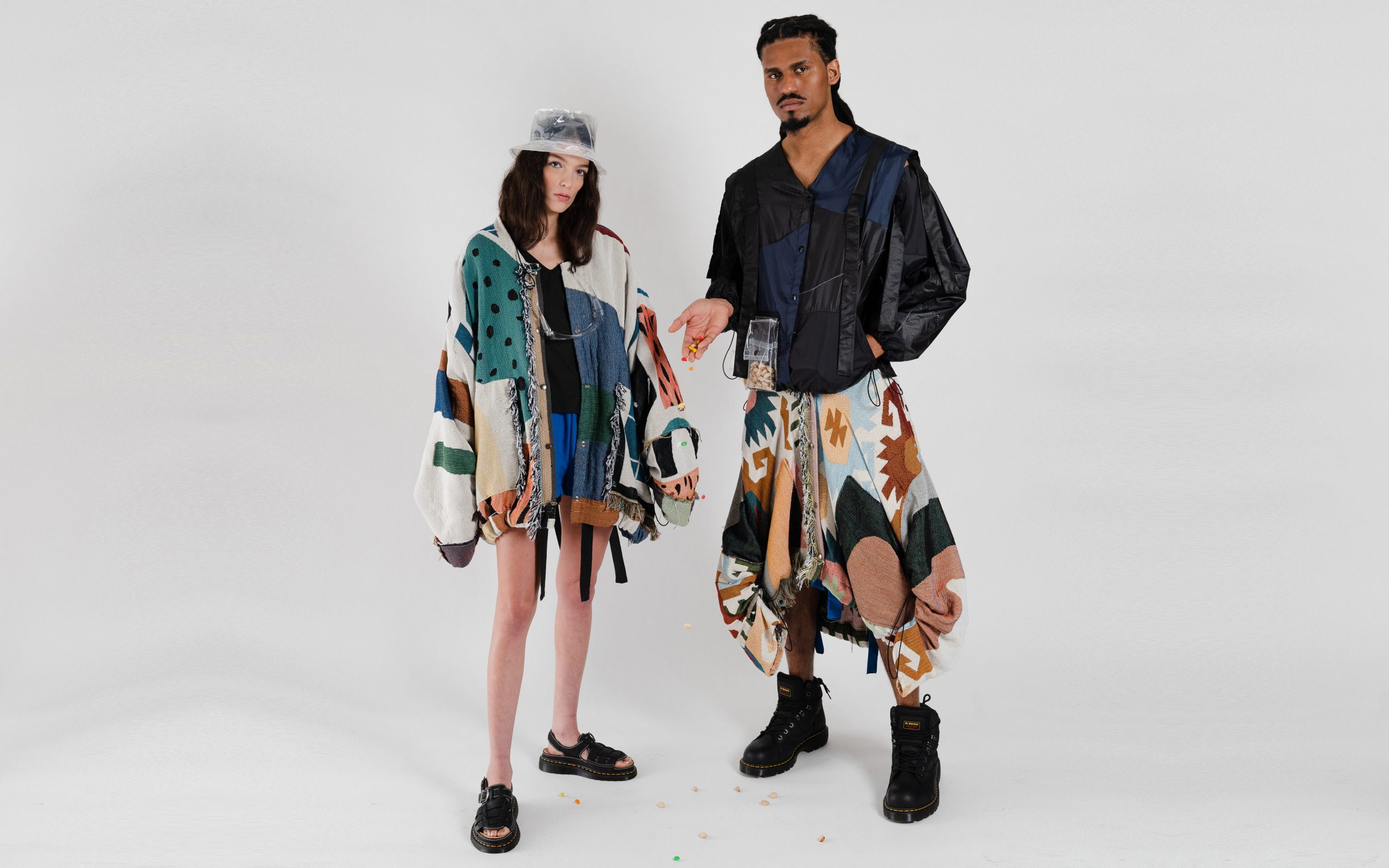Adiff’s co-founders on what their upcycling-targeted book indicates for the future of fashion.
Now here’s some inventive fare to definitely get at the rear of: the recently unveiled Open up Supply Style Cookbook, a essential and inventive title that presents an inclusive and personal technique to eco-mindful style. It options essays by sustainability considered leaders, such as Céline Semaan and Aditi Mayer, and a host of comprehensive how-to guidelines for making upcycled garments based mostly on patterns from models like Ræburn, Chromat and BrownMill.
The “cookbook” is the brainchild of Angela Luna and Loulwa Al Saad, co-founders of New York-centered genderless label Adiff. As an activism- centric read, it affords the prospect to much better fully grasp the colonial roots and fundsistic structures that have enforced — and go on to enhance — the myriad problematic ethical and environmental features of the fashion marketplace. Nonetheless, as equally the e book and the model exemplify, they’re concerns we can attempt to course accurate.
“Sustainability has often been a precedence for us, but we didn’t really consider our function into the realm of upcycling until 2018, when we had been aspect of the CFDA’s Elaine Gold Start Pad Plan,” suggests Luna about confronting Adiff’s item output and contribution to the aforementioned systemic problems. “That’s when it grew to become clear to us that our program of donating products to enable refugees and giving folks option-centered clothes was, in a roundabout way, further more contributing to challenges like climate modify.”
Because this paradigm change, Luna and Al Saad have continued to finesse Adiff’s working product and amplify the “why” powering its thoughtfully crafted pieces, like a genderless reflective vest that is created in a facility that employs resettled refugees. In tandem with this function-pushed refinement, the duo devised the idea for an approachable, instructional e book that would highlight the voices of persons performing in the sustainability house as theorists and activists as well as creatives whose perform is equally price-pushed.
In a specifically unprecedented gesture, the book’s contributors dive deeply into the concept of “sustainable creation” by teaching visitors how to make an array of wearables, this kind of as Adiff’s blanket jacket, Assembly’s shirtdress, BrownMill’s patched sweatshirt and Chromat’s Mikito match. “We’re making an attempt to deliver points a very little closer to the shopper,” suggests Luna, introducing that a second edition of the reserve, which will function additional items by an even broader selection of manufacturers, is now in the operates. She notes that as sustainability has develop into far more of a crucial strategy inside the design and style room, shoppers are getting inundated with info that can be tricky to interpret and use to their have daily wardrobe choices. “You can make the goods in the e-book on your own applying materials you currently have, which is empowering in terms of knowledge the approach a bit a lot more,” she suggests.
“True sustainability goes past consumerism,” says Al Saad, pointing to a swell in the start of vogue strains that boast an eco-pleasant philosophy. “It’s about searching less, utilizing what we already have, upcycling and getting a cue from common tactics these types of as mending and fixing. That’s what everyone was applied to carrying out again in the working day, prior to sustainability was rebranded as a advertising buzzword.”
Alongside with its “360-degree see,” many thanks to its assortment of voices, the e-book addresses a critical quandary of sustainable structure: the persistence of ingenuity. “The fashion sector as a whole is not likely to go away,” says Luna. “Designers are always going to want to develop new issues. But by open up-sourcing their types, they can carry on building new things without having excellent expenditure to the planet and garment workers…. From a manufacturer perspective, it’s crucial for designers to feel about other means of spreading their aesthetic and eyesight than just providing a certain merchandise.”
There’s also the basic truth that to tackle fashion’s — and the larger world’s — hazardous architecture, we must all band collectively as a single. As Al Saad illustrates with a nod to one of the book’s essays (by Otto von Busch), which commences by comparing mindfully made finery to do-it-yourself confectionery: “Fashion is finest when it is shared. And that strategy emphasizes our objective, which is to democratize sustainable trend and share it with everybody.” In that spirit, bon appétit.
Examine out a few of our favorite modern haute upcycling times right here:
